Fauvism and Expressionism
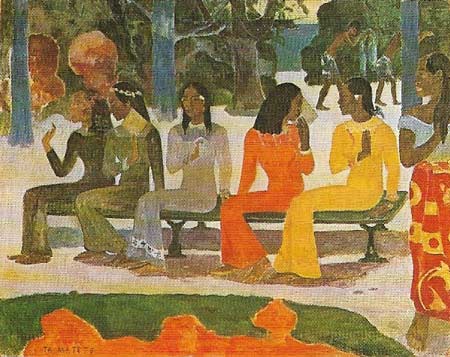
Figure 1. Paul Gauguin's "Taa Matete" (1893) simplifies reality into a colourful and decorative frieze. While the painter found stimulation in the life of Tahiti as a source of subject-matter, this work stems stylistically from Egyptian art in the figures' poses.
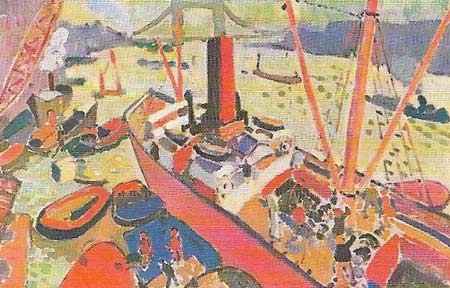
Figure 2. Fauve color is intense in Andre Derain's "The Pool of London" (1906) and its lack of concern for realism is particularly noticeable in the portrayal of what must have been a very gray and dull scene. The high viewpoint contributes to the flattening of space and hence the reduction of the picture to a pattern.
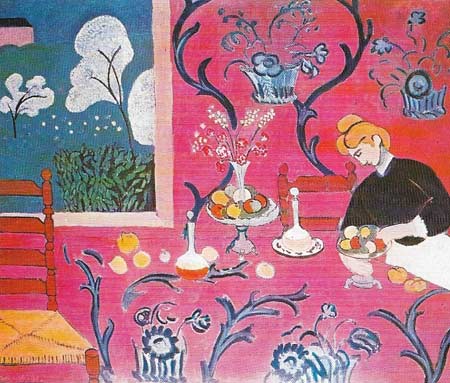
Figure 3. In Matisse's "Harmony in Red" (1908–1909), a large-scale decorative painting, the patterns and the wallpaper and the cloth are is important pictorially as the woman on the chair. The flatness of the composition is so extreme that the view from the window has been taken for a picture on the wall.
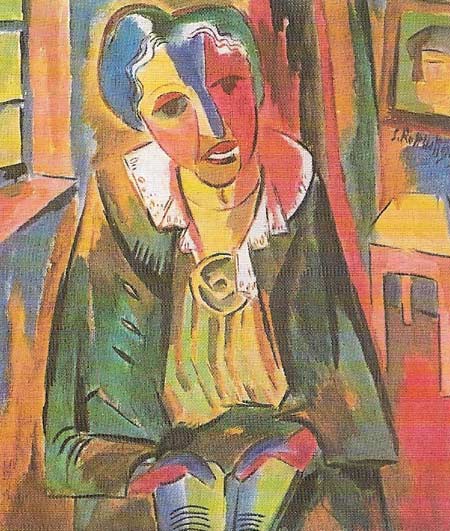
Figure 4. "Rose Shapiro" by Karl Schmidt-Rottluff uses certain Cubist conventions, such as geometrical forms and the stylisation of facial features, to achieve a direct and pungent image unhampered by unnecessary detail. However, to suit his expressive purpose he also employs sharp perspective, as in the table or window. Raw impact is gained by the rough canvas showing through.
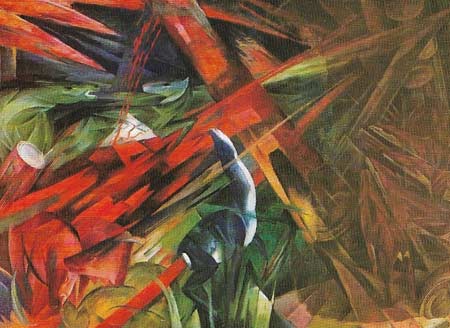
Figure 5. Franz Marc's "Fate of the Animals" is not just a forest scene but a comment on all the most threatening aspects of nature. To depict the particular was not enough for the Expressionists.
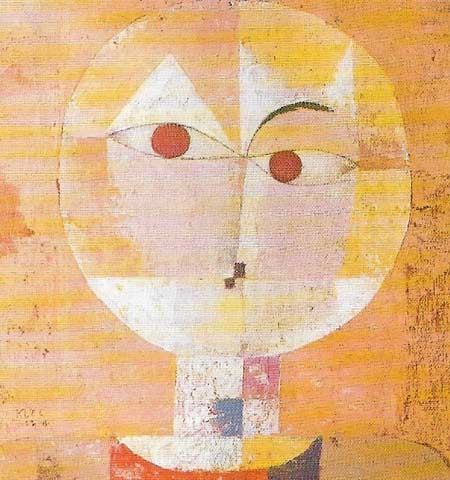
Fig 6. Paul Klee's picture "Senecio" (1922) is based on a kind of humanized geometry. Klee methodically investigated form.
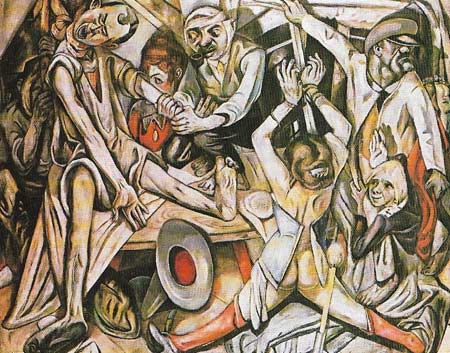
Figure 7. In "The Night" (1918–1919), Max Beckmann's art is shown to be expressionist in its violence, but its power lies in ambiguity. This is far from the robust directness that characterized Brucke painting.
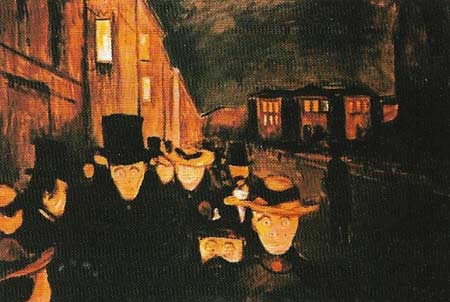
Figure 8. Edvard Munch's "Evening on Karl Johann Street, Oslo" (1892) takes an everyday subject that might have appealed to the Impressionists. However his concern is not the visual world, but the revelation of the anxieties of urban man. Notice how, in the background, the brightly lit windows have a sinister, almost monstrous presence; the obsessed eyes; the way that the faces acquire a ghost-like quality in the gaslight. Munch's art was the expression of a neurotic personality, but he depicted more than a personal malaise. The oppression of bourgeois city life was a recurrent theme in Expressionism.
The technique of "divisionism" or "pointillism", meaning the building-up of a composition with a multitude of colored points that merge in the eye of the spectator to produce the required color, was pioneered by Georges Seurat (1859–1891). Paul Signac (1863–1935) enlarged each point into a substantial block of paint so that there was no longer any question of such visual combination. In this way color began to lose its representational function.
Liberation of color
A different path to greater freedom of color was taken by the Pont Aven school whose most important representatives were Paul Gauguin (1848–1903) (Figure 1) and Emile Bernard (1868–1941). They evolved what was known as "cloisonnism", based on the enclosure of forms within black outlines that bore the entire burden of expressing the shape of the object and did away with the need for shading with light or dark. This meant the painter could work in large flat areas of color, producing the effect of a stained-glass window, the brilliance of which need not he diminished by the requirements of modeling.
The complete liberation of color from form, so that it could act autonomously, was the hallmark of the group of diverse French painters known as Fauves ("wild beasts") who exhibited together in 1905 at the Salon D'Automne.
The most gifted of the Fauves, Henri Matisse (1869–1954), superficially adopted the divisionist technique in his "Luxe, Calme et Volupte" (1905), which Signac admired and bought. In fact Matisse was more concerned with the decorative possibilities of the style than with any analysis of color.
At the end of the decade, he abandoned divisionism altogether and produced compositions dominated by areas of flat, unbroken color of equal intensity (3), so emphasizing the picture surface in its own right rather than treating it as a kind of window through which the viewer looks.
The most important of the other members of the group were Andre Derain (1880–1954) and Maurice Vlaminck (1876–1958). The influence of Signac is apparent in the fragmentation of their brushstrokes (Figure 2), although the mood of their paintings owes far more to Vincent van Gogh (1853–1890). At their best their pictures have an intense emotional force rooted in the immediacy with which the spectator feels he has shared in their creation.
Color and emotion
This desire to transmit emotion links Derain and Vlaminck with Expressionism. However, Expressionism is not a historically precise term like Fauvism. It covers a whole range of art that, broadly speaking, is more concerned with expression than beauty and distorts the subject to that end.
The most significant influences on 20th-century Expressionism were van Gogh and the Norwegian Edvard Munch (1863–1944), with his powerful and neurotic evocations of the tensions that underlay daily life (Key).
The Brücke ("Bridge") group, founded in Dresden in 1905 and including Ludwig Kirchner (1880–1938), Karl Schmidt-Rottluff (1884–1976) (Figure 4) and Erich Heckel (1883–1970), were influenced by the stark, violent color of Fauvism, but the content of their art is fully Expressionist. (Even at their wildest, the French group essentially continued in the Impressionist tradition, transmitting joy in nature and light.) The work of Brücke painters was full of venom against nineteenth-century materialism and their paintings – particularly those of Kirchner – present a morbid and pessimistic view of contemporary society.
Abstraction and social criticism
Wassily Kandinsky (1866–1944) and Franz Marc (1880–1916) (Figure 5), who were working together in Munich in the years preceding World War I, were motivated by a similar rejection of materialism and pushed the distortion of the object towards total abstraction. Together they published an almanac, Der Blaue Reiter to which composers and critics as well as artists contributed.
Kandinsky arrived at a complete dissolution of the object in his work by a combination of Expressionist distortion and an emphasis on the picture surface by methods similar to those already used by Matisse.
After the war there emerged in German painting a new tendency which contemporaries called "New Objectivity". While reacting against the strident technique and color of the earlier Expressionists, painters such as Otto Dix (1891–1969) and George Grosz (1893–1959) continued to employ distortions as a means of expressing their protest against the injustices of society.
Max Beckmann (1884–1950) is usually classed with these painters, but his work is more private in its imagery (Figure 7). The Swiss Paul Klee (1879–1940), a close associate of Kandinsky, veered between abstraction and child-like fantasy (Figure 6).
The rise of Hitler effectively put an end to the development of modern art in Germany until after the war. But then the Expressionist tendency continued internationally. An outstanding practitioner today is the British painter Francis Bacon (1910–1992), whose painting owes little stylistically to the artists described above but, like their work, confronts the viewer with potent images of extreme situations.
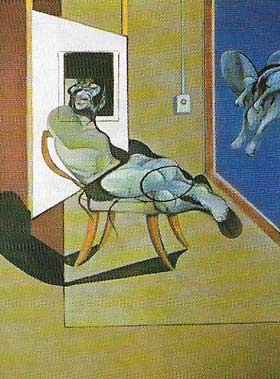 |
| Francis Bacon's "Seated Figure" (1974) creates an uneasy atmosphere more by precarious postures and intense handling of paint than distortion or the use of violent color, which have lost their real power as Expressionist devices. |
